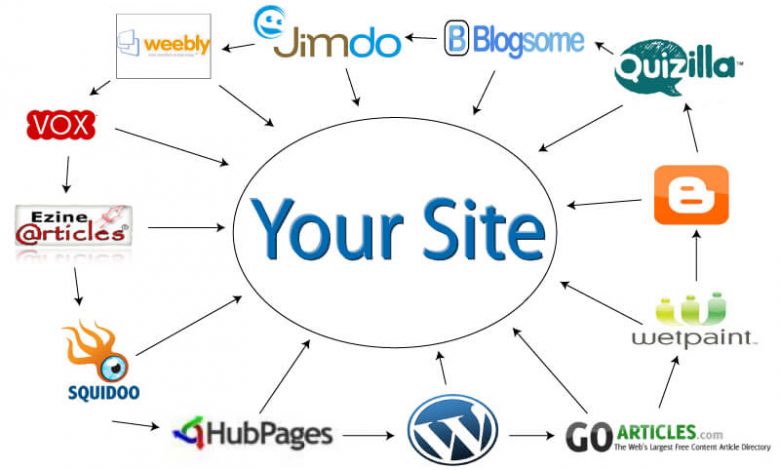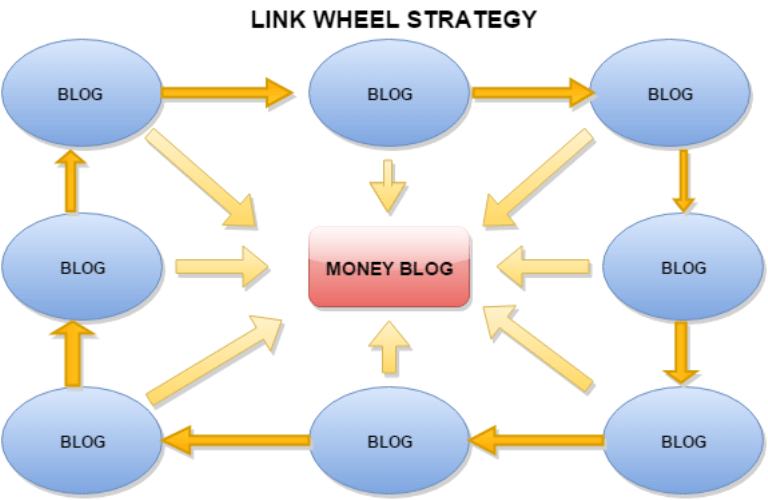
What Do You Need to Know About Link Wheel?
The concept behind a link wheel is to leverage the authority and link juice from multiple websites to enhance the rankings of a central target website. The link wheel aims to create a network of interconnected sites that pass link equity and traffic to each other, ultimately directing it towards the central website. Basically, it is a technique used in search engine optimization (SEO) to create a network of interlinked websites or webpages with the goal of boosting search engine rankings. It involves creating a circular pattern of links between various sites or webpages, forming a “wheel-like” structure.
Benefits of link wheel
While link wheels were once popular in SEO, it’s important to note that search engines have evolved and become more sophisticated in detecting manipulative linking practices. Therefore, it is advisable to focus on building high-quality, natural backlinks rather than solely relying on link wheel strategies.
- They aimed to improve the search engine rankings of the central website by leveraging the link equity from multiple interconnected websites. If executed effectively, this could potentially lead to increased visibility in search engine results pages, driving more organic traffic to the central website.
- The link wheel structure intended to distribute link equity across the interconnected websites, with each site passing link juice to the next and ultimately to the central website. This approach aimed to amplify the authority and relevance signals for the central site, potentially improving its search engine rankings.
- A link wheel involved creating multiple supporting websites within the same niche or topic. This could lead to a diversified backlink profile for the central website, which is considered beneficial in SEO.
- As the supporting websites in the link wheel were meant to have unique content and attract organic traffic, there was a potential for increased referral traffic to the central website.
Process of link wheel
In modern SEO practices, it’s recommended to focus on building high-quality, natural backlinks from authoritative and relevant sources rather than relying solely on link wheel strategies. Search engines now prioritize user experience, quality content, and genuine engagement, so it’s best to invest in those areas for long-term success in search engine rankings.

- Identify a central target website: Choose the website or webpage that you want to improve the search engine rankings for. This central site is typically the most important one in terms of content or business objectives.
- Create a network of supporting websites: Develop a set of satellite websites or webpages that are relevant to the central website’s niche or topic.
- Interlink the websites: Each supporting website in the network should link to the central website, passing link equity and relevance.
- Generate content and promote: Regularly update the supporting websites with valuable content, including articles, blog posts, videos, or other relevant media.
- Monitor and maintain: Monitor the performance of the link wheel, keeping track of rankings, traffic, and engagement metrics. Continually maintain and update the content and links within the network to ensure its effectiveness.
Important Tips
While link wheels were once a popular strategy in SEO, it’s important to note that search engines have become more sophisticated in detecting manipulative linking practices. Building high-quality, natural backlinks through content creation and genuine engagement is generally recommended over relying solely on link wheel strategies. Remember that search engines prioritize quality, relevance, and user experience. It’s crucial to focus on building high-quality, natural backlinks rather than relying solely on link wheel strategies. Building a solid foundation of valuable content, genuine engagement, and ethical SEO practices will contribute to long-term success in search engine rankings.
- Choose Relevant and Quality Websites
- Create Unique and Valuable Content
- Interlink Websites Strategically
- Vary Anchor Text
- Diversify Content Types
- Monitor and Update Regularly
- Focus on User Experience
- Avoid Over-Optimization
- Use Social Media to Promote the Link Wheel
- Monitor and Adjust







